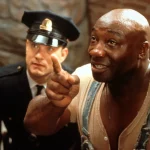Shrek (2001)
- nguyentruong
- November 6, 2024
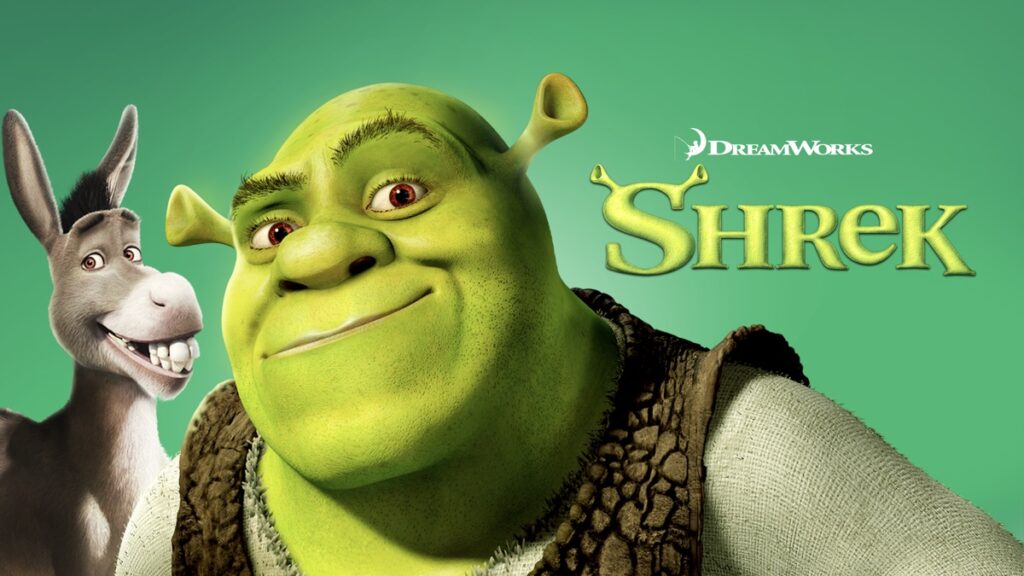
Shrek (2001), directed by Andrew Adamson and Vicky Jenson, is a groundbreaking animated film that cleverly subverts traditional fairy tale tropes to tell a story about self-acceptance, friendship, and true love. Produced by DreamWorks Animation, the film quickly became a cultural phenomenon for its witty humor, engaging characters, and stunning animation. Featuring the voices of Mike Myers as Shrek, Eddie Murphy as Donkey, Cameron Diaz as Princess Fiona, and John Lithgow as Lord Farquaad, Shrek has endured as a beloved classic that appeals to both children and adults with its layered storytelling and clever satire.
The story begins with Shrek, a grumpy but good-hearted green ogre, who enjoys his peaceful life in a secluded swamp. However, his solitude is interrupted when a large number of fairy tale creatures are forced into his swamp by the ruthless and power-hungry Lord Farquaad, who wants to rid his kingdom of “freaks” to create a “perfect” place in his own image. Frustrated by the intrusion, Shrek sets out to confront Farquaad and reclaim his home. Farquaad, in turn, sends Shrek on a mission: if Shrek rescues Princess Fiona from a distant tower guarded by a dragon, Farquaad will restore Shrek’s swamp.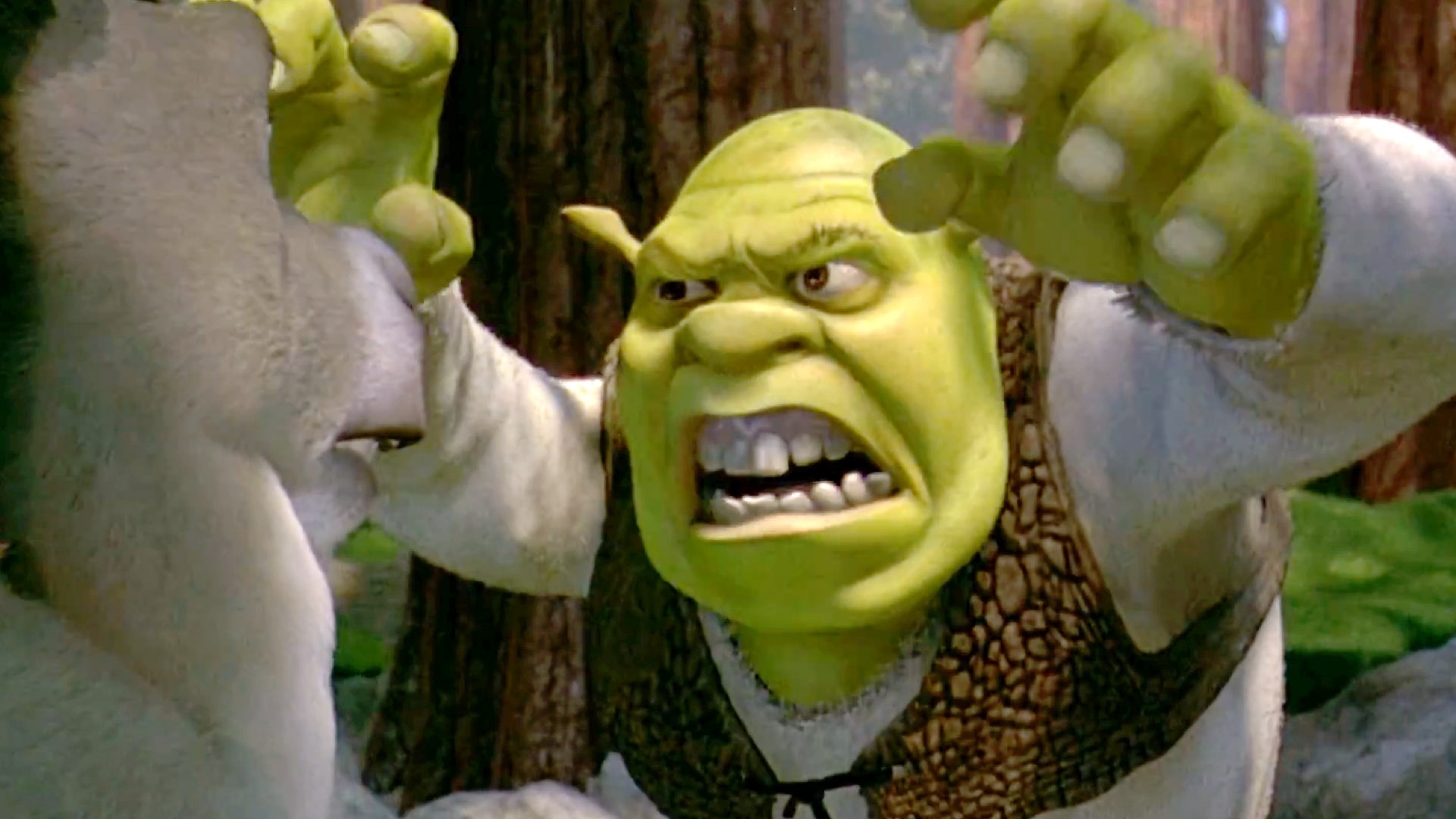
On his journey, Shrek reluctantly teams up with Donkey, a talkative and loyal companion who provides comic relief and, eventually, friendship. Despite their initial disagreements, the two form a close bond that becomes central to Shrek’s journey of self-discovery. Donkey’s constant optimism and humor contrast with Shrek’s cynical outlook, helping Shrek see the world – and himself – in a new light. Eddie Murphy’s energetic performance as Donkey brings warmth and humor, creating a dynamic friendship that carries the film.
When Shrek and Donkey reach the tower, they engage in a hilarious encounter with the fire-breathing dragon, who surprisingly takes a liking to Donkey. Together, they manage to rescue Princess Fiona, who is revealed to be spirited, strong-willed, and full of surprises. While Fiona initially appears to be the stereotypical “damsel in distress,” her personality and skills challenge Shrek’s expectations and lead to one of the film’s most engaging plot twists: Fiona’s secret that she transforms into an ogre at night due to a curse, a fact she hides out of fear of judgment.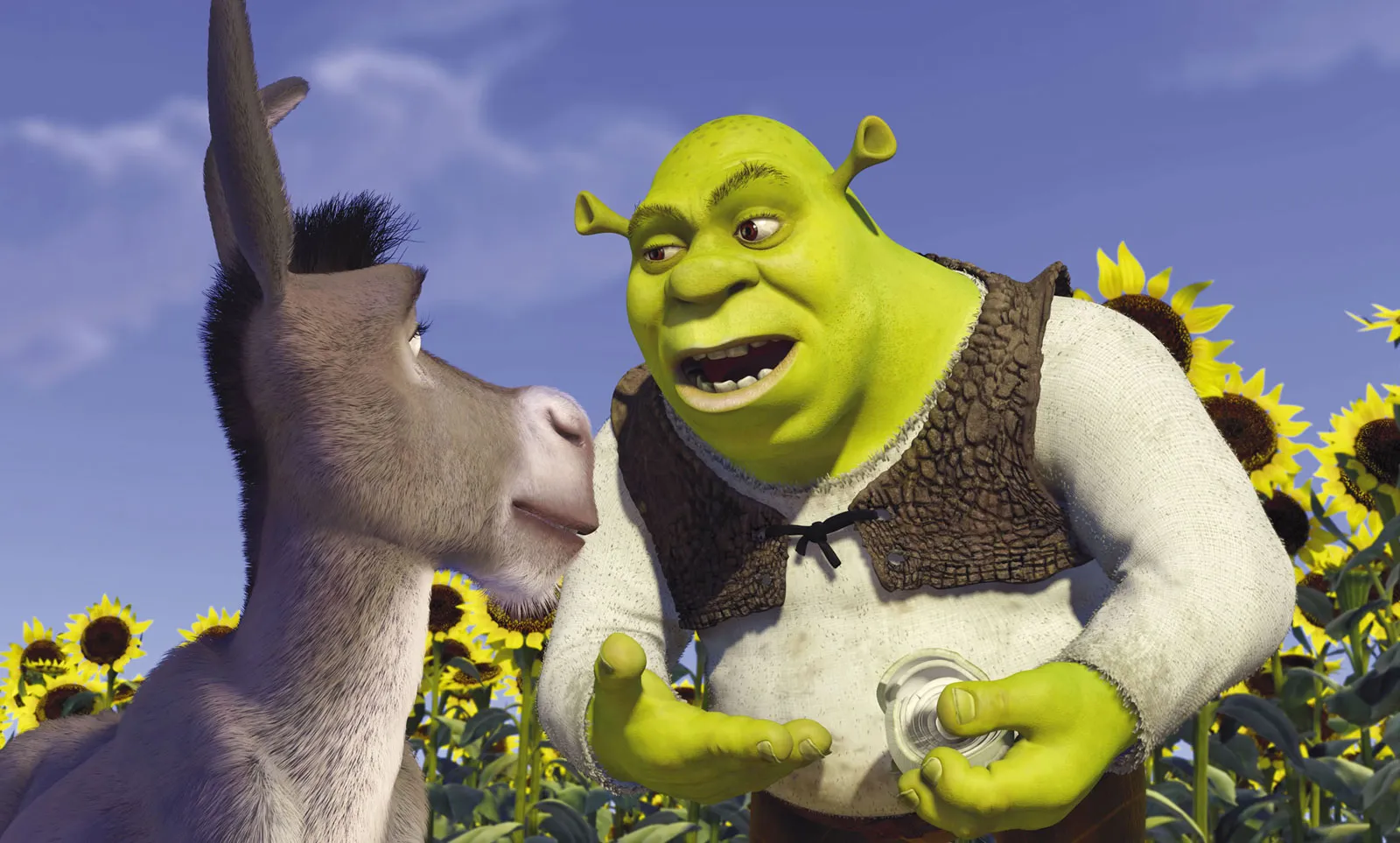
As they journey back to Farquaad, Shrek and Fiona begin to develop feelings for each other, bonding over their shared insecurities and fears. Shrek, who has always been judged by his appearance, finds himself drawn to Fiona, who understands the pain of feeling like an outsider. However, misunderstandings arise, and Shrek overhears Fiona expressing doubts about her appearance, leading him to believe she does not love him. Heartbroken, Shrek returns to his swamp, unaware that Fiona’s words were about her own insecurities.
The climax of the film occurs at Farquaad’s wedding, where Shrek, with Donkey’s encouragement, finally confronts his own feelings and rushes to stop Fiona from marrying Farquaad. In a twist that reveals Fiona’s secret to the world, she transforms into an ogre in front of the entire crowd. Shrek then confesses his love for her, and they share a kiss that breaks the curse – though not in the way Fiona expects. Rather than returning to her human form, Fiona remains an ogre permanently, discovering that her true beauty lies in being her authentic self. This subversion of the classic “beauty” trope is central to Shrek’s message: true love and acceptance are not about appearances but about accepting each other as they are.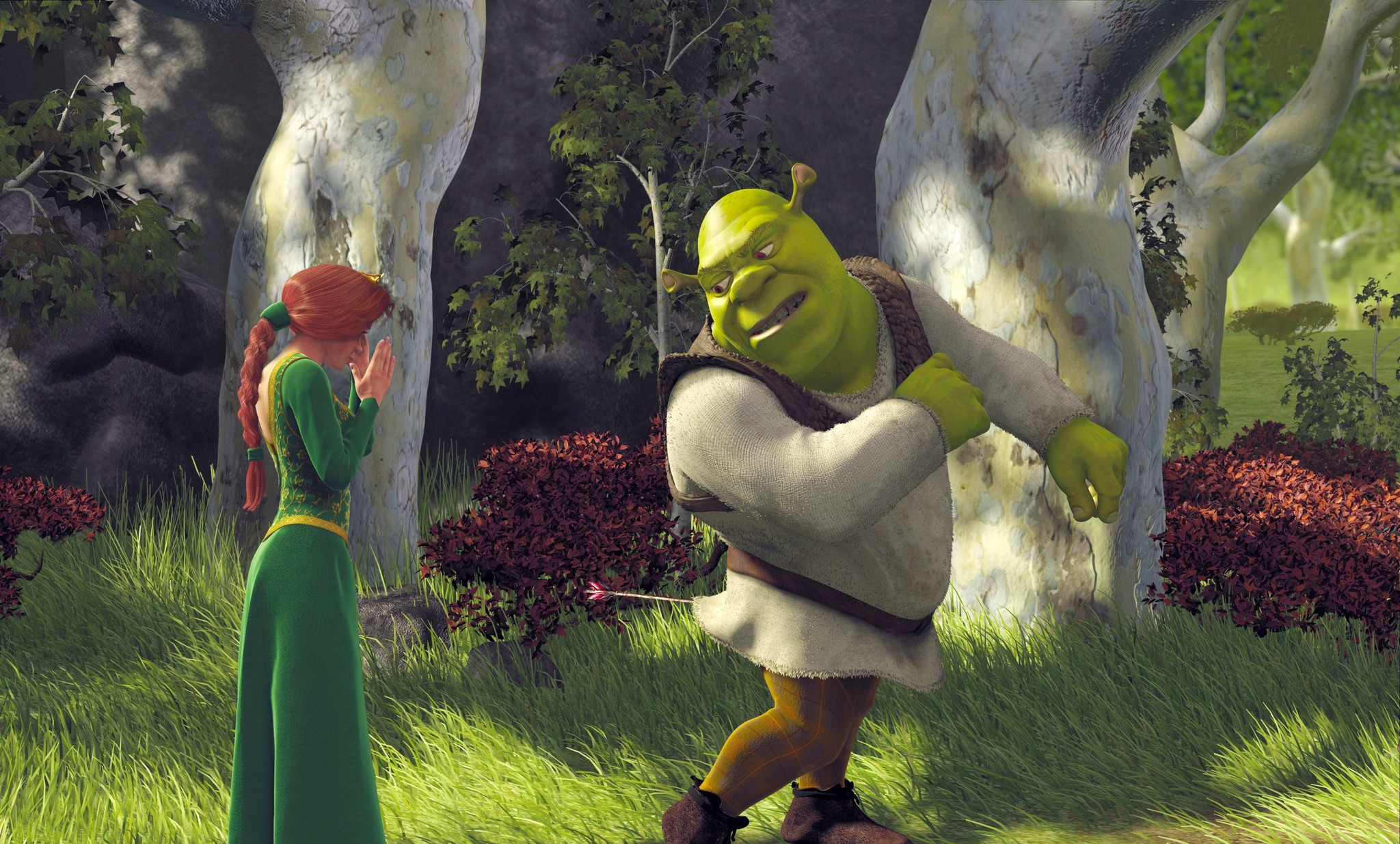
The film’s humor is another standout element, blending irreverent comedy with clever satire that pokes fun at fairy tale clichés and pop culture. Shrek dismantles the idealized image of fairy tales, presenting a realistic, sometimes messy world where characters defy stereotypes. From Farquaad’s miniature kingdom (a parody of Disneyland) to the comical twist on classic storybook creatures, Shrek embraces a humorous, self-aware tone that appeals to adults while still entertaining younger audiences.
The animation itself was groundbreaking at the time of release, with rich visuals, detailed environments, and expressive characters. The vibrant, lush landscapes of Shrek’s swamp, the fiery castle, and Farquaad’s immaculate kingdom create a visually dynamic world that enhances the fairy tale setting. DreamWorks’ commitment to animation quality is evident throughout, setting new standards for animated storytelling and putting the studio on the map as a serious competitor to Pixar.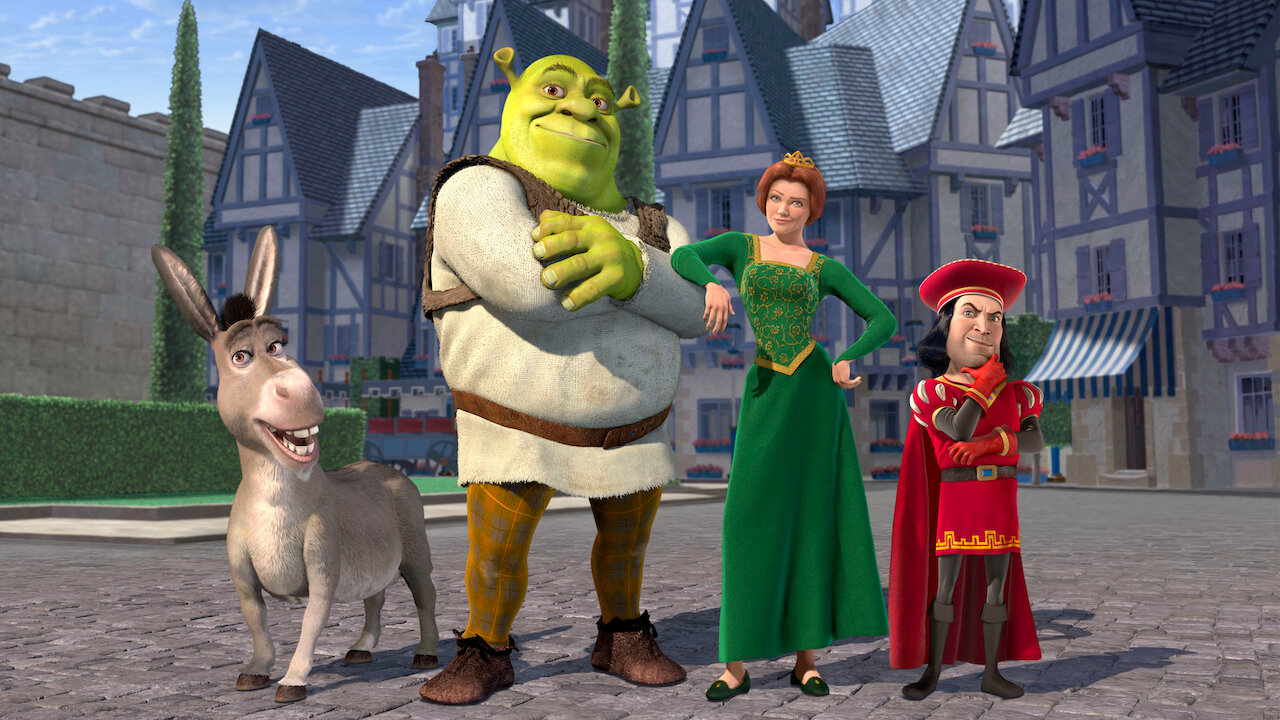
The soundtrack, featuring songs like Smash Mouth’s “All Star” and “I’m a Believer,” as well as Rufus Wainwright’s cover of “Hallelujah,” adds emotional depth to the film and quickly became iconic. The music, paired with the humor and heartfelt moments, gives Shrek a unique charm that continues to resonate with audiences.
Shrek was not only a massive box-office success but also a critical darling, praised for its innovative approach and universal themes. It won the first-ever Academy Award for Best Animated Feature, cementing its status as a milestone in animation history. The film’s success led to sequels, spin-offs, and a Broadway adaptation, further expanding its influence and cultural impact.
At its heart, Shrek is a story about self-acceptance and the power of love to transcend superficial judgments. By flipping the traditional fairy tale on its head, Shrek offers a refreshing message that beauty is more than skin deep and that happiness comes from embracing who we truly are. The film’s wit, charm, and heart have made it a timeless classic, reminding audiences that everyone, no matter how unconventional, deserves a happy ending.





